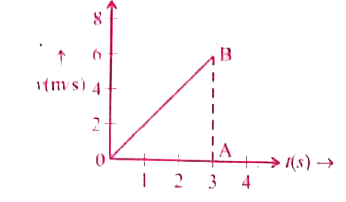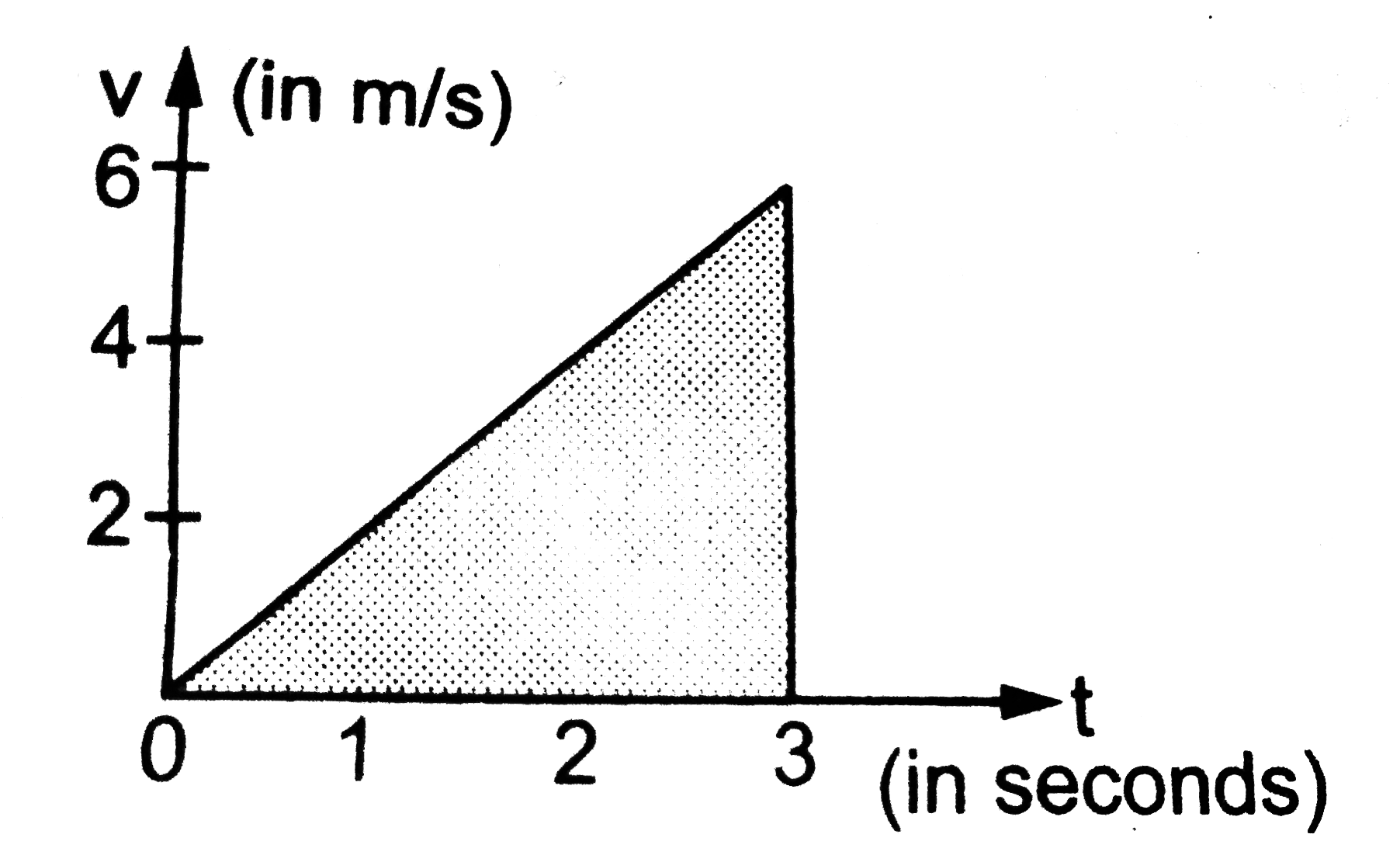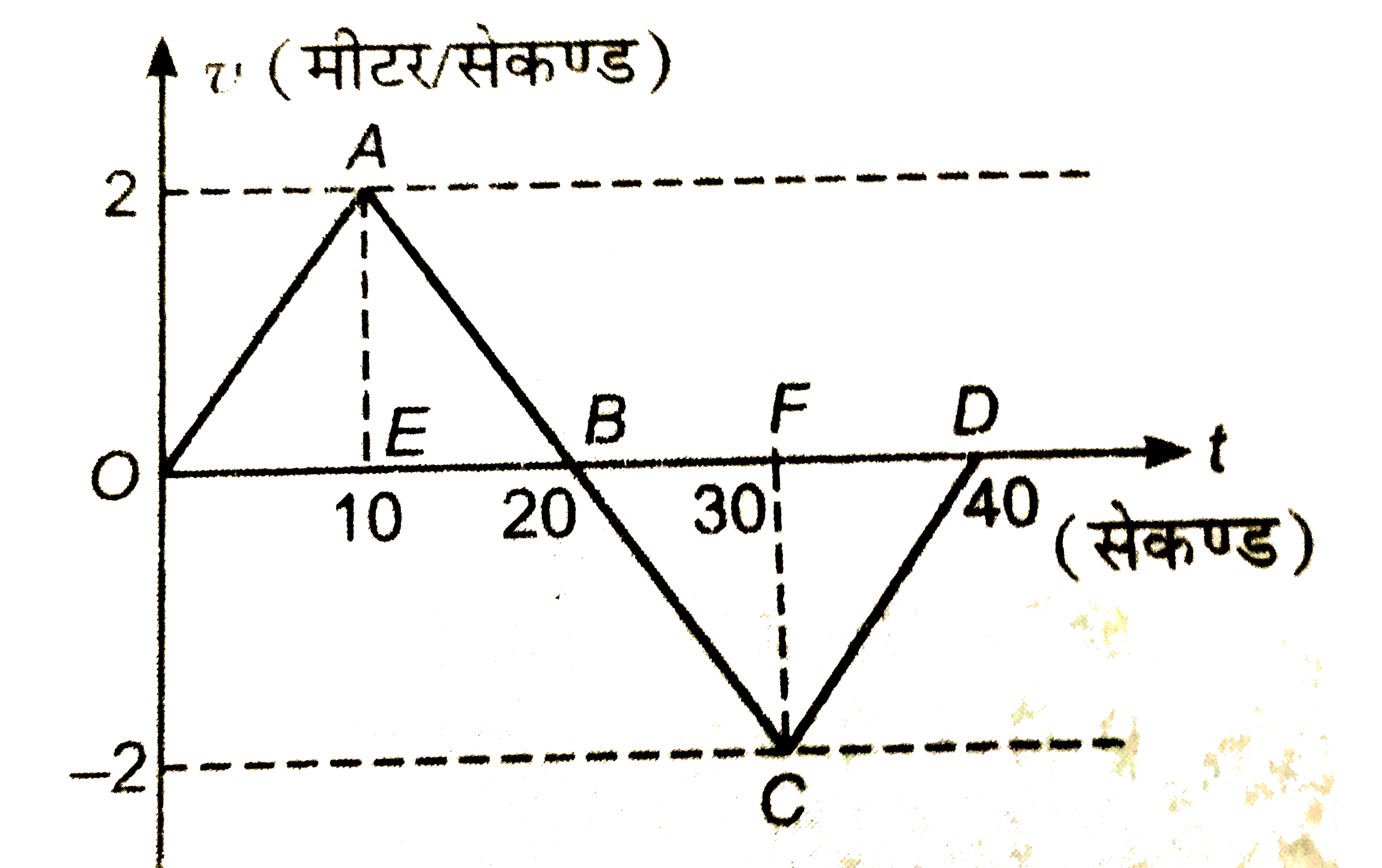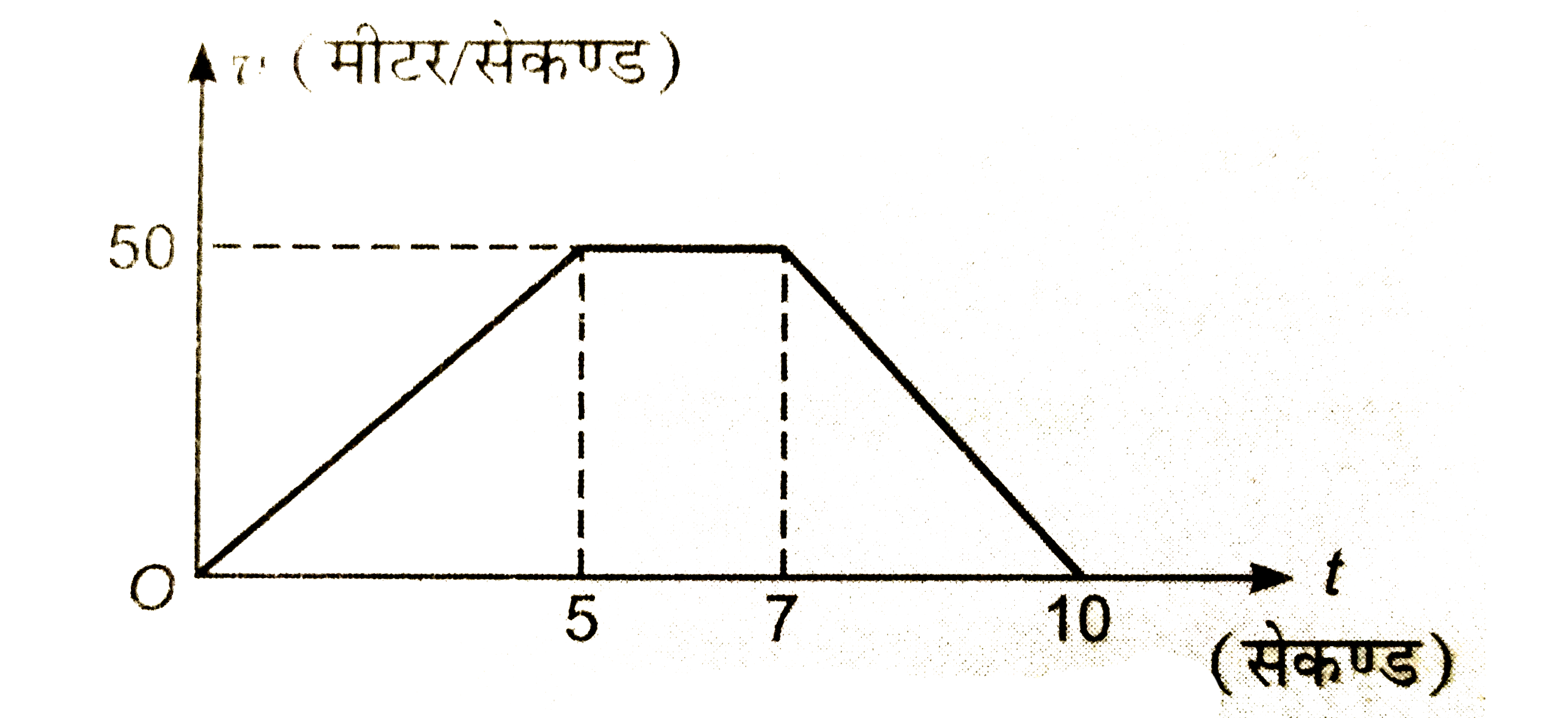Find the distance travelled by the particle during the time t = 0 to t = 3 second from the figure .
 Solution in Tamil
Solution in Tamil
(a) 60m,6ms−1 , (b) 36m,9ms−1
Topper's Solved these Questions
- MOTION IN A STRAIGHT LINEBook:NCERT TAMILChapter:MOTION IN A STRAIGHT LINEExercise:EXERCISES
Explore 23 Videos
- MOTION IN A PLANEBook:NCERT TAMILChapter:MOTION IN A PLANEExercise:EXCERCISES
Explore 32 Videos
- MOTION OF SYSTEM OF PARTICLES AND RIGID BODIES Book:NCERT TAMILChapter:MOTION OF SYSTEM OF PARTICLES AND RIGID BODIES Exercise:EXERCISE (V. NUMERICAL PROBLEMS)
Explore 6 Videos
Similar Questions
In which of the following exmples of motion, can the body be considered approxinmately a point object :
(a) a railway carriage moving without jerks between two two stations.
(b) a mondey sistting on top of a man cycling smoothly on a circulat track. (c ) a spinning cricket ball that turns sharply on hitting the round . (d) a tumbling beake theat has slopped off the edge of a table ?
View SolutionState, for each of the following physical quantities, if it is a scalar or a vector. Volume, mass speed acceleration, density, number of moles, velocity, angular frequency, displacement, angular velocity.
View SolutionA uniform disc of mass 100g has a diameter of 10 cm. Calculate the total energy of the disc when rolling along a horizontal table with a velocity of 20cms−1. (take the surface of table as reference)
View SolutionFigure shows the speed versus time graph for a particle. Find the distance travelled by the particle during the time t=0 to t=3s.

View SolutionThe position of a particle moving rectilinearly is given by x = t^3 - 3 t^2 - 10 . Find the distance travelled by the particle in the first 4 seconds starting from t = 0 .
View SolutionA particle is moving along the x-axis such that s=6t-t^(2) , where s in meters and t is in second. Find the displacement and distance traveled by the particle during time interval t=0 to t=5 s .
View SolutionThe velocity time graph of a particle moving along a straight line is shown in the figure. In the time interval from t=0 to t=8 second, answer the following three question.

The distance travelled by the particle is :
View SolutionThe distance travelled (in meters) by the particle from time to t = 0 to t = 1s will be –
View SolutionThe distance travelled (in meters) by the particle from time t = 0 to t = t will be –
View SolutionSuppose that a particle mvoes on a straight line so that is velocity at time t is v(t)=(t^(2)-2t)m//s . (a). Find the displacement of the particle during the time interval 0 le t le 3 (b). Find the distance traveled by the particle during the time interval 0 le t le 3 .
View Solutionthe velocity of a particle varies with time as shown below the distance travelled by the travelled by the particle during t=2s"and" t= 6s. Is
View Solutionसंलग्न चित्र में प्रदर्शित किसी कण के वेग समय ग्राफ से ज्ञात कीजिए-
(i) प्रथम 20 सेकण्ड में कण द्वारा तय दूरी एवं इसका विस्थापन।
(ii) t=20 से 40 सेकण्ड के बीच कण द्वारा तय दूरी एवं उसका विस्थापन।
(iii) प्रथम 40 सेकण्ड में कण द्वारा तय दूरी एवं इसका विस्थापन।
(iv) 0 से 20 सेकण्ड तक कण का औसत वेग, औसत चाल तथा औसत त्वरण।
(v) 0 से 10 सेकण्ड तक के अन्तराल में कण का औसत त्वरण।
(vi) t=0 सेकण्ड से 20 सेकण्ड के बीच कण का औसत त्वरण।
(vii) t=5 सेकण्ड पर कण का त्वरण।
(viii) t=20 सेकण्ड पर कण का त्वरण।

View Solutionएक कण का वेग समय ग्राफ चित्र में प्रदर्शित है। ज्ञात कीजिए।

(i) t=0 से t=5 सेकण्ड के समयान्तराल में कण का त्वरण।
(ii) t=5 से t=7 सेकण्ड के समयान्तराल में कण का त्वरण।
(iii) t=7 से t=10 सेकण्ड के समयान्तराल में कण का त्वरण।
(iv) t=0 से t=7 सेकण्ड के समयान्तराल में कण द्वारा तय दूरी।
(v) t=0 से t=10 सेकण्ड के समयान्तराल में कण द्वारा तय दूरी।
View Solutionएक कण t = 0 से चलना प्रारंभ करता है । t समय में कण द्वारा चली हुई दुरी s=(2.5m/s2)t2 से प्राप्त होती है । (a) समय t = 0 से 4 .0 तक में कण की औसत चाल बताएँ। (b) t = 4. 0 s पर कण की चाल बताएँ।
View SolutionFind the distance travelled by the particle during the time t = 0 to t = 3 second from the figure .
View SolutionThe speed verses time graph for a particle is shown in the figure. The distance travelled (in m) by the particle during the time interval t = 0 to t = 5 s will be __________
View Solution